Can you really make dyes in all colours of the rainbow with vegetable scraps and other earthy organic things? A ton of Pinterest posts claim that you can. We wanted to be sure. So we tested some of the recipes and found that some work beautifully, while others just give you different shades of brown.
Clockwise from left: Turmeric, beetroot, onion skins, cabbage.
Onion Skins Just Make Eggs Brown
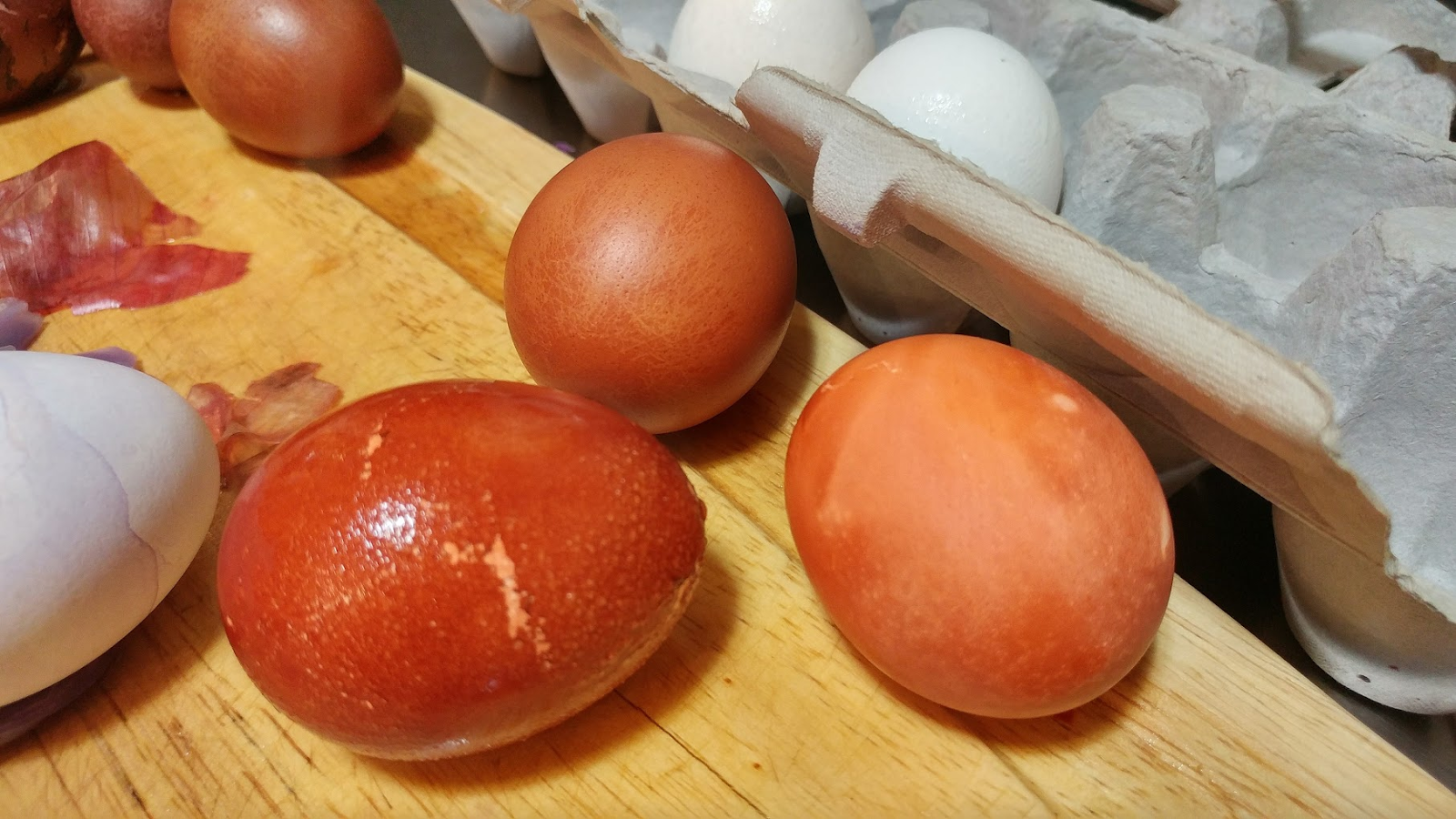
Hope you like brown.
I had high hopes for this one. I’ve used onion skins successfully in the past to dye wool yarn. (They turned white yarn a beautiful golden yellow). My results here were disappointing, though.
First, let’s clarify: We are indeed talking about onion skins, not the onions themselves. You can buy onion skins by going up to a display of onions in the supermarket and just rummaging around the bottom. Pick up a few onions and put them down, and the skins will slip off into your hand. Stuff your bag: It feels like you’re stealing, but this is literally the grocery store’s garbage. You can’t check out with a weightless bag of onion skins, though, so put a small onion in there too.
To dye the eggs, you boil them with onion skins. Some recipes say you can boil the onion skins and soak the eggs in the liquid later. And some say you need vinegar in the mix. I tried every combination of these and got basically the same result every time.
What You’re Supposed to Get: Yellow onions are supposed to give golden yellow eggs, or blood red if soaked overnight. Red onions are supposed to give you… pale green? Hmm.
What Actually Happened: Brown. Lots of brown. Do you like brown eggs? Then you probably would have bought brown eggs in the first place and don’t need this technique. I did not get any yellow, or any red, or any pale green. I got different — honestly beautiful — shades of brown. The first egg I boiled with red onion skins came out looking like it was made of wood. It got an unsolicited compliment from my husband, who was walking through the kitchen at the time and whose hobby is woodworking.
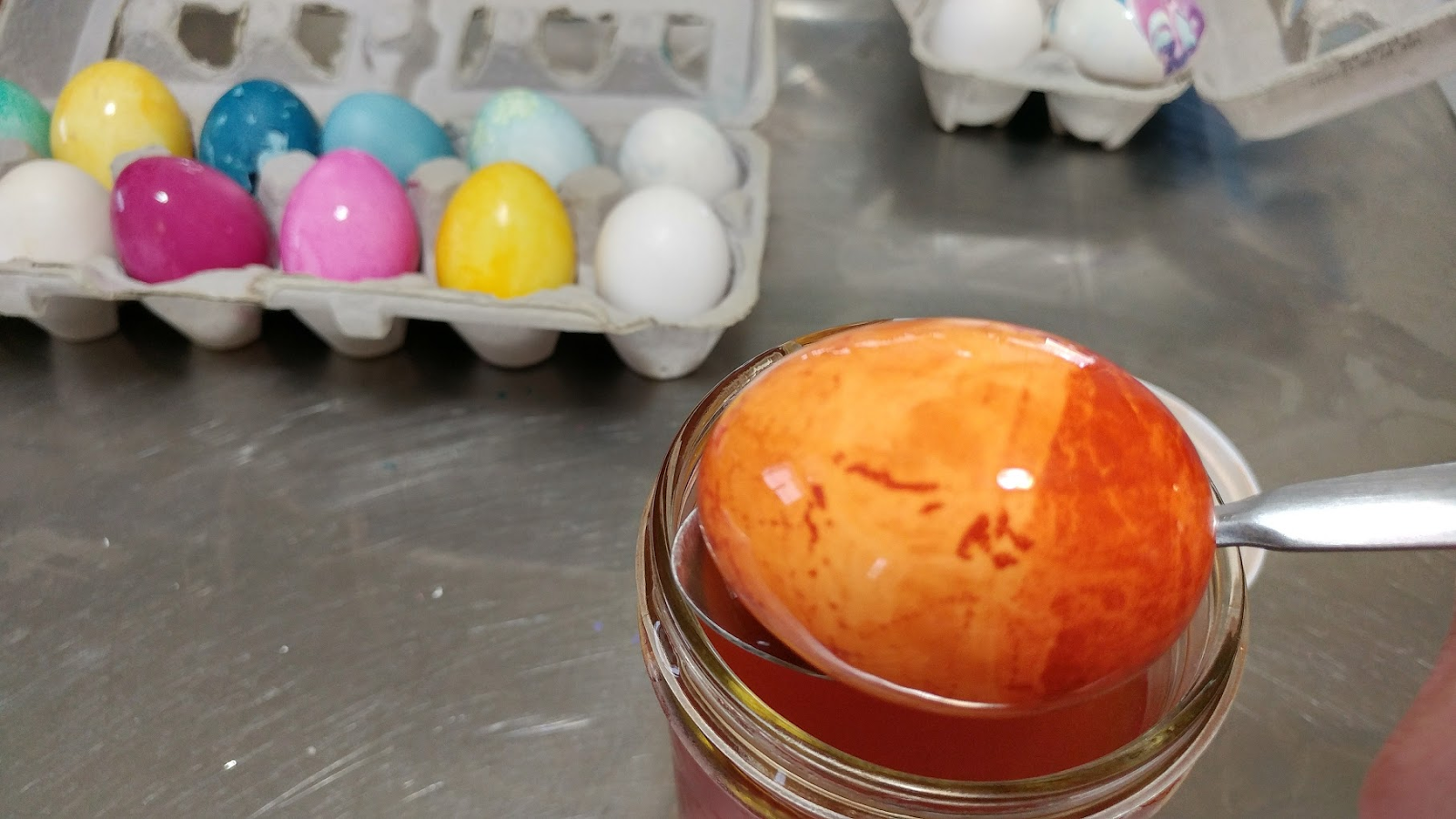
I left one of the eggs in the red onion dye for about two days, and it made the orangey brown you see above. This was the closest I came to the promised colours, but it seems any time you leave eggs in a dye bath for a long time, you get weird patterns from sediment settling in a jar. Go for it if you like it, I guess.
Your Kitchen Will Smell Like: Onions. Not a bad smell. Or onions and vinegar, which is maybe less nice.
Practicality: Reasonable. You just boil the onion skins, and there’s nothing much to clean up — just rinse out the pot.
Red Cabbage Turns Eggs a Robin’s Egg Blue, Somehow
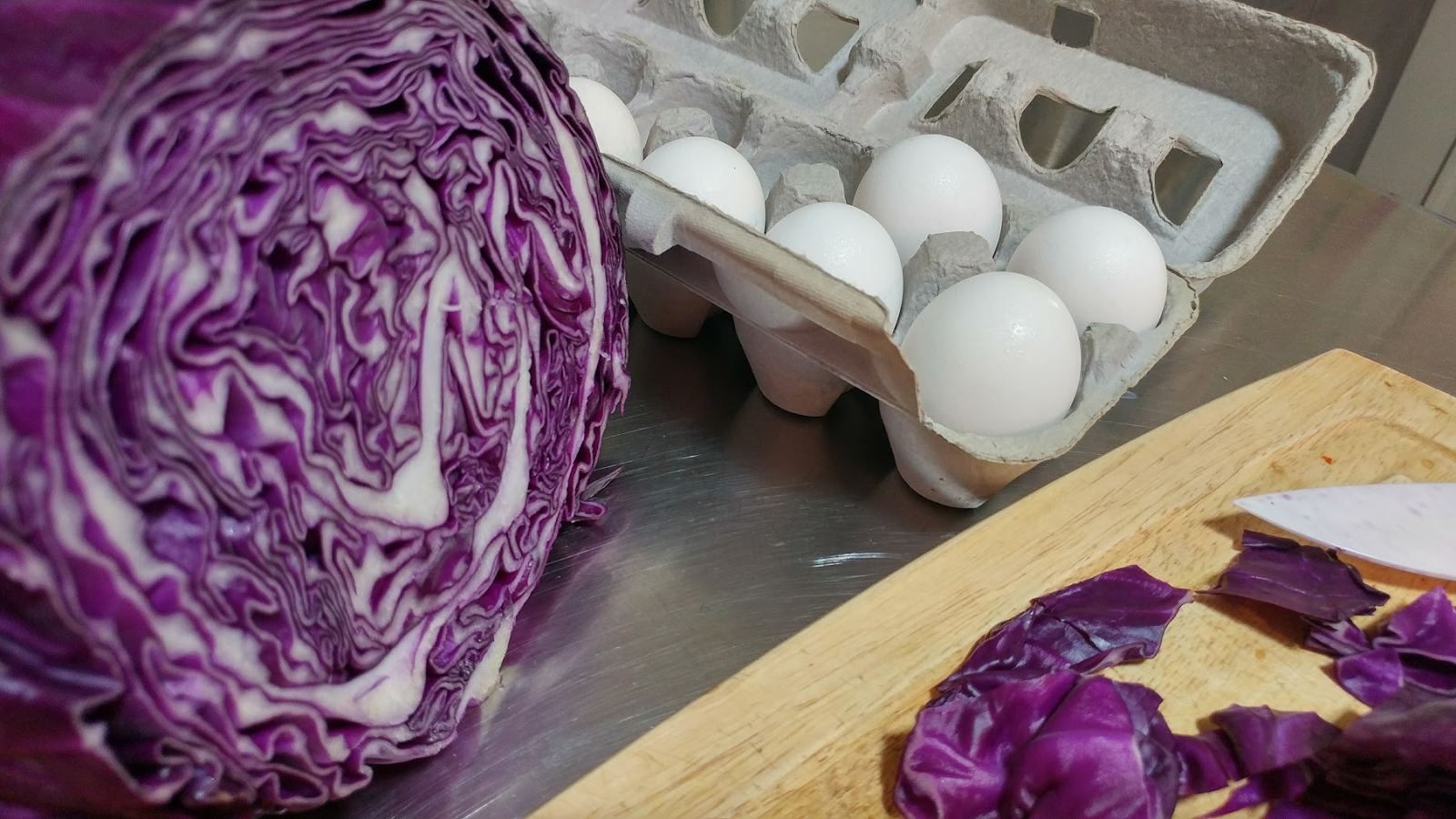
That’s a lot of cabbage.
Pinterest told me that red cabbage would dye eggs a robin’s egg blue. I had my doubts: Just because something is colourful doesn’t mean you can get that colour to stick to anything else. Also, red cabbage is purple, definitely not blue.
Cabbage is easy to find in the grocery store, but mine only had it in massive quantities. I had to buy a head of cabbage the same size as my own actual head. I chopped about a third of it, and added it to boiling water with an egg.
At first, I was disappointed. I boiled the egg with the cabbage forever and got lavender cabbage in lavender water, with the egg still white. I added vinegar and boiled a bit longer, and the water turned pink but still no luck. This egg had maybe a faint tinge of lavender and that’s it. I put a fresh egg in a jar of cabbage-vinegar-water overnight as a last ditch attempt so I could say I tried everything.
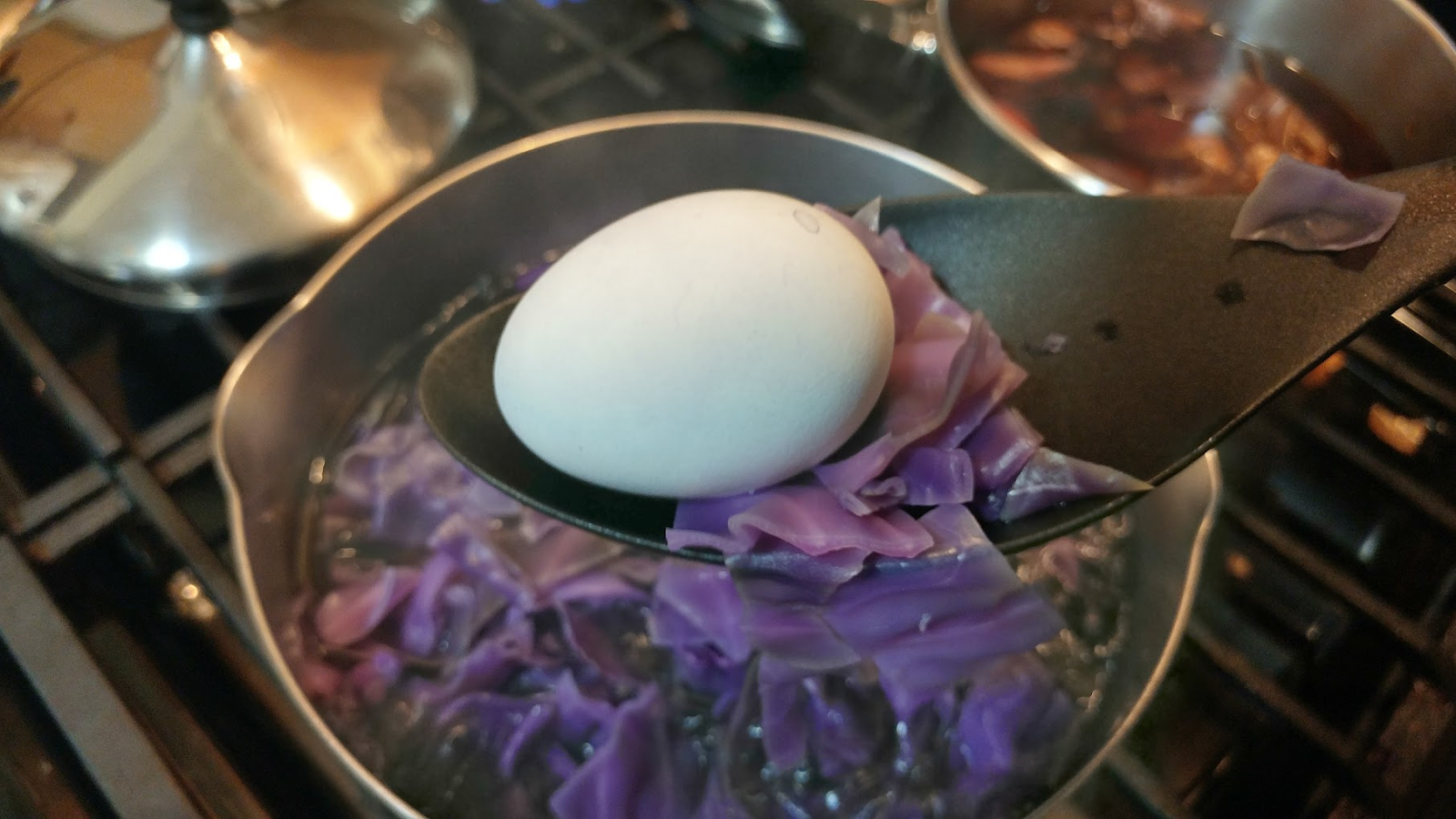
Not promising.
What You’re Supposed to Get: Robin’s egg blue
What Actually Happened: I got robin’s egg blue! Some magic must have happened in the fridge overnight. The egg I pulled out in the morning was a very deep blue. I’ve since dyed several eggs in the same water: When you pull them out of the bath they look purple, and then acquire the blue-green hue as they dry.
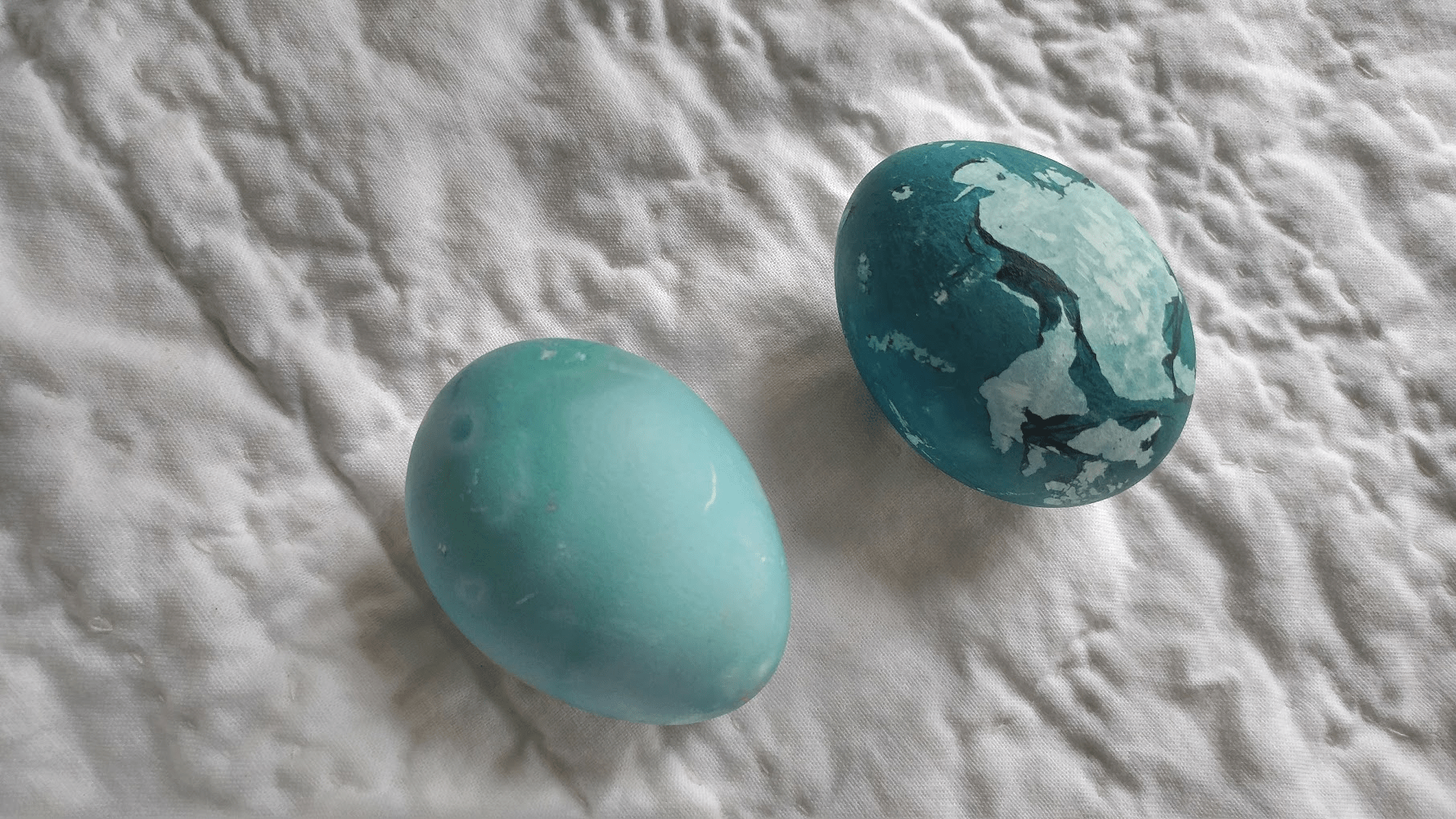
Holy crap!
Your Kitchen Will Smell Like: Cabbage and vinegar. I’m sure I have ancestors who will disown me for saying this, but cabbage smells awful. Anyway, the colour is worth it.
Practicality: You have to plan ahead for this one, because the dye needs to cool before it will work, and even then it takes hours for an egg to pick up the colour. Also, you’ll have lots of leftover cabbage. Pull out your best sauerkraut recipes!
Beetroot Dyes Eggs Pink, But You Have to Use Fresh, Not Canned
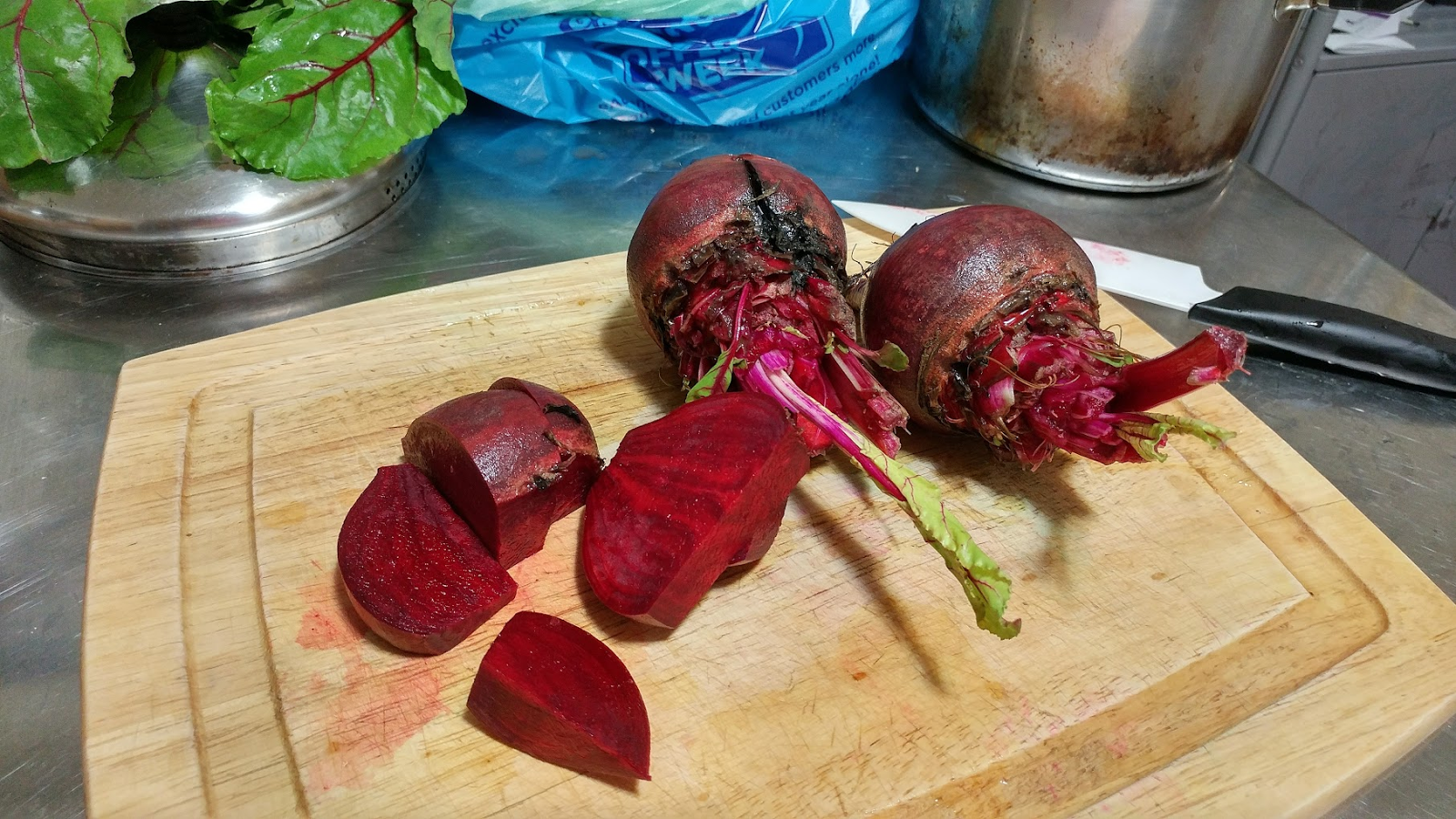
My store only sells beetroot with their tops on in large wet bunches. I thought I could avoid repeating the Giant Cabbage Debacle by purchasing a jar of canned beetroot — after all, they are pre-cooked, and the first step in dyeing with beets is to cook the beets — but this did not work. I boiled the beetroot with and without vinegar, and in the end all the colour was drained from the beetroot, Bunnicula-style. The eggs picked up no red colour, even after an overnight soak. Fail.
So I went back and got the giant bunch of fresh beetroot. I chopped the leaves and stems and cooked them with scrambled eggs and some leftover sweet potato hash, and they were delicious. Where were we again? Oh yes, dyeing eggs. For this attempt, I chopped the fresh beetroot, and added them to a pot of boiling water with the eggs.
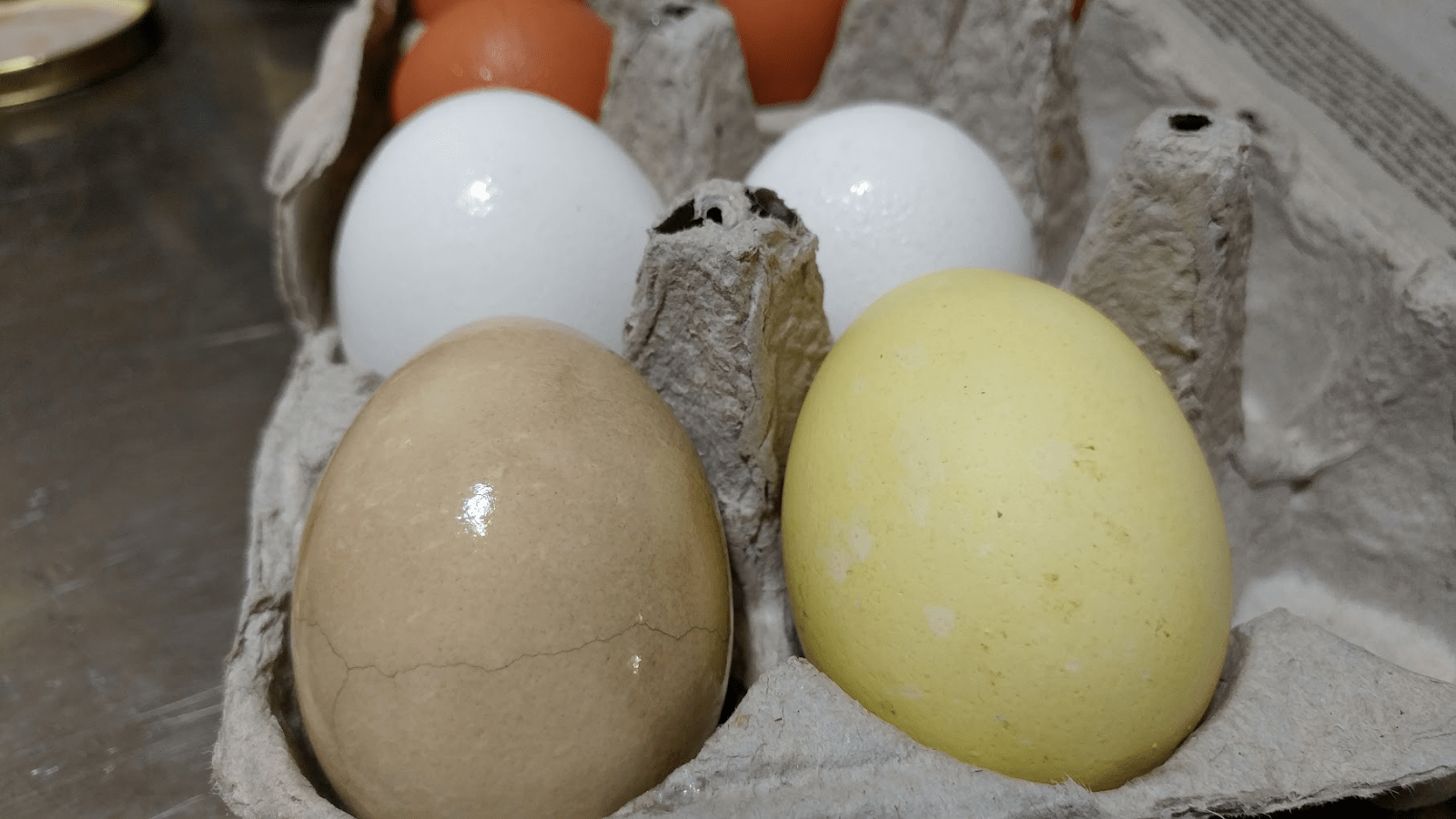
Left: Canned beetroot, with vinegar. Right: Fresh beetroot, no vinegar.
What You’re Supposed to Get: Pink.
What Actually Happened: At first, I thought I was in for more disappointment. I boiled an egg with the beets, and got a pale canary yellow. But then I added vinegar to the beet water, and it became the pink dye of my Pinterest dreams. Twenty minutes in the dye gives an egg a nice shade of light hot pink. Overnight, it gets even deeper.
Unfortunately, the pink colour began to fade after a few weeks in the fridge. So if you want your pink eggs at their most vibrant, dye them no more than a day or two before you display them.
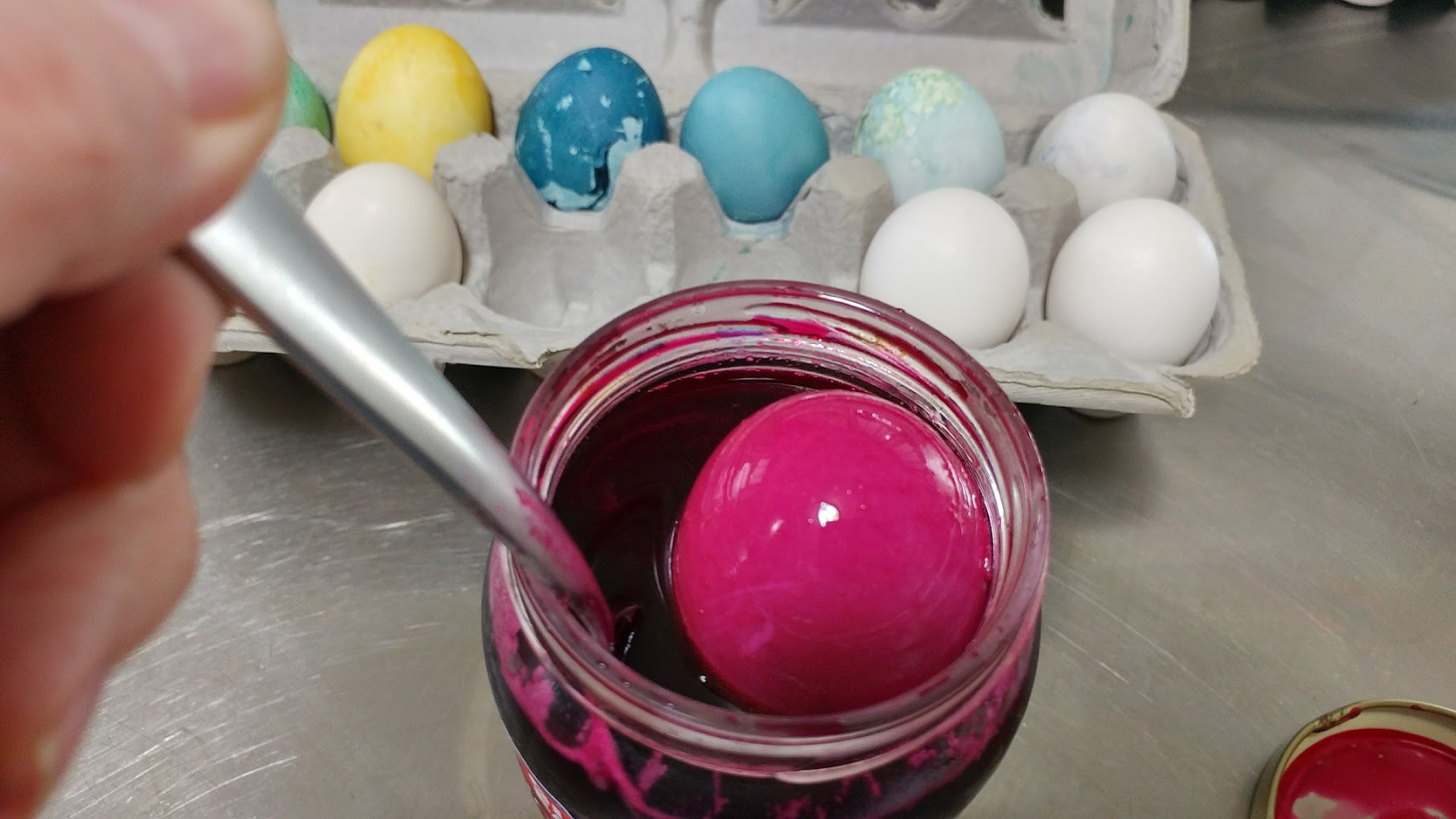
Aw yeah.
Your Kitchen Will Smell Like: Beetroot (faintly), then vinegar.
Practicality: As long as you don’t mind chopping some beetroot (which may be attached to some monstrous tops), this isn’t so bad. And after you boil them, they’re perfectly cooked and ready to eat, so hey, free dinner.
Turmeric Reliably Makes Eggs Yellow
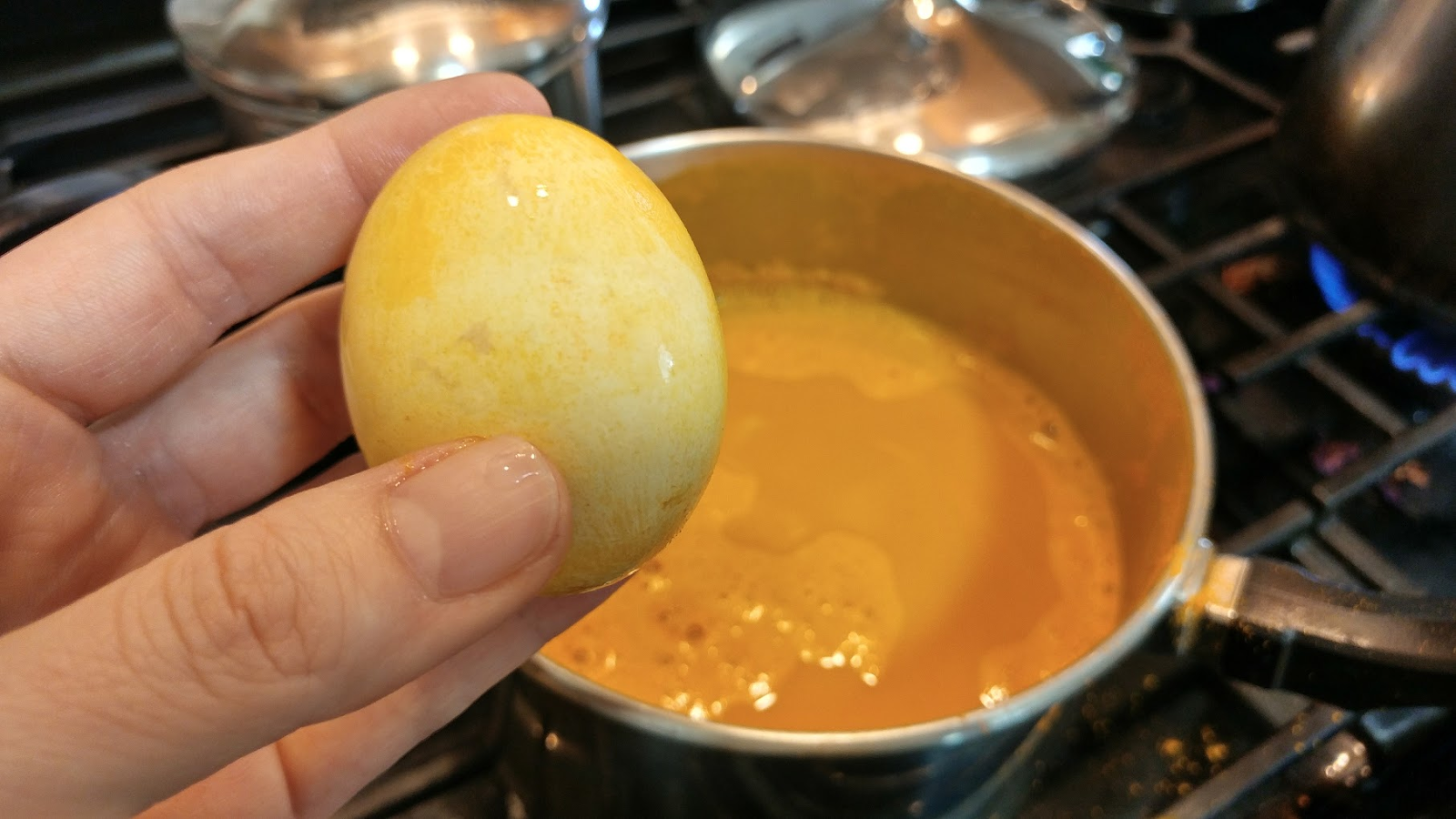
Got that? Yellow.
Turmeric is the yellow spice we all know from Indian cooking. It’s what gives store-bought curry powder that yellow colour. It even stands in for the far more expensive saffron in rice dishes sometimes, since they both impart that golden glow.
I followed a recipe that called for six tablespoons of ground turmeric boiled in water, plus a glug of vinegar. While you can buy turmeric at a grocery store, you’ll spend a fortune on two tiny bottles. Go to an Indian grocery instead, and get a litre-sized bag of the stuff for next to nothing.
What You’re Supposed to Get: Yellow.
What Actually Happened: I got yellow. I got the same colour with or without vinegar, hot or cold, and no matter how long I soaked it for. Do you like yellow? This gives you yellow.
Your Kitchen Will Smell Like: Turmeric, which is hard to describe: Not exactly spicy, more like faintly medicinal. It isn’t a strong smell, so don’t worry about it.
Practicality: The only annoyance is that the powdered turmeric is still in your dye liquid, making it sludgy. I didn’t try to strain it out with a paper towel, but that might be possible.
The Bottom Line: Forget Onions, but the Other Three Work
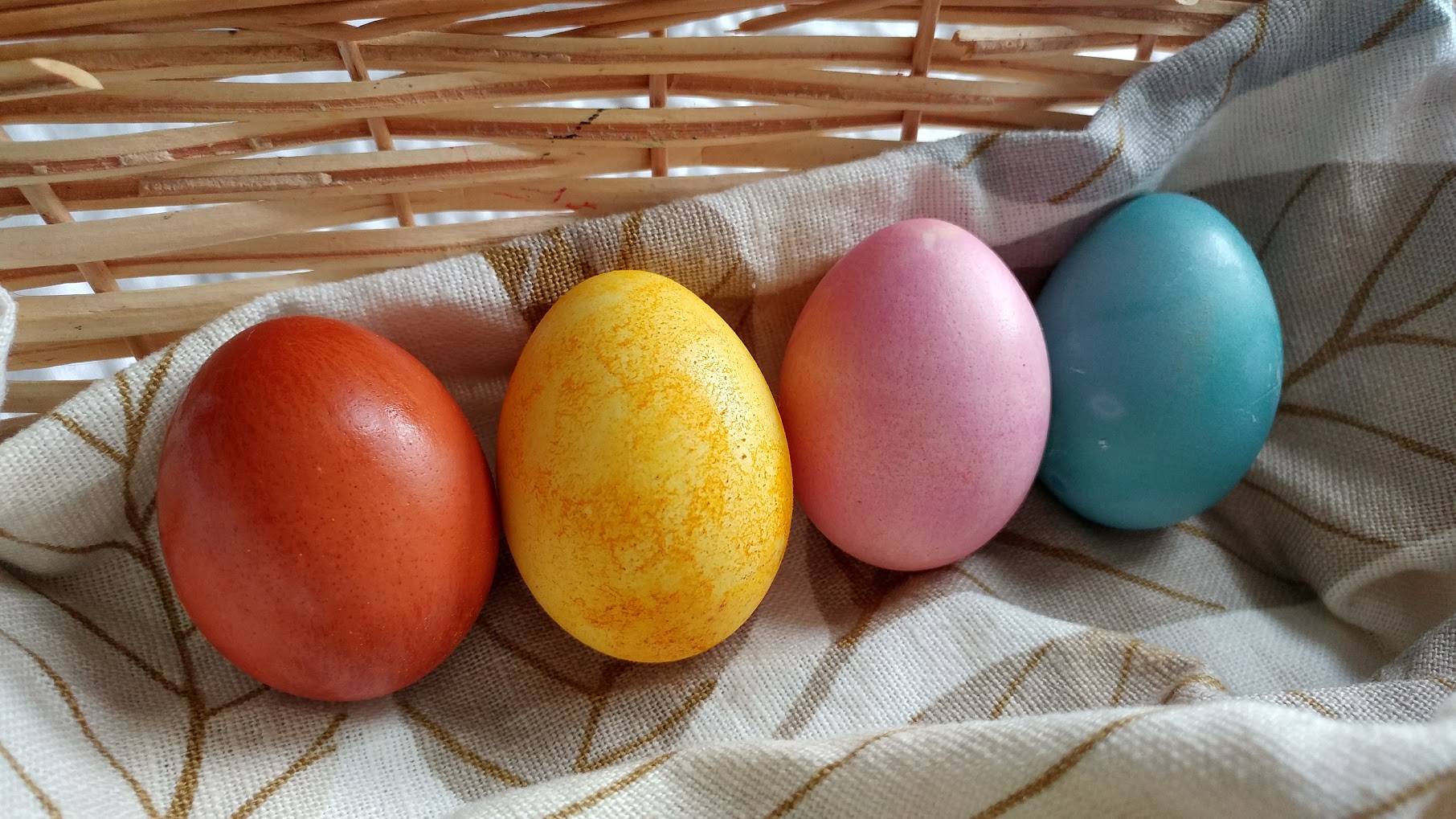
From left: Onion skins, turmeric, beets, cabbage.
Between turmeric, beetroot and cabbage, we have all three primary colours. Mix red and blue for purple, and so on — I didn’t try these combinations, but I trust that with some faint recollections of kindergarten art class you can figure this out.
If you want yellow eggs, simmer six tablespoons of turmeric with a cup or two of water. Dip the eggs in the resulting soup for a few minutes.
If you want pink eggs, start with fresh beetroot. Chop and boil it, have it for dinner, and mix the resulting beetroot liquid with vinegar to make your dye. Dyeing time is minutes to hours, depending on how deep you want your pink.
If you want blue eggs, boil some cabbage and let the cabbage water cool. It takes several hours for the eggs to soak up any cabbage dye, so plan on colouring all your blue eggs at the same time in a large container.
Onion skins are fun to experiment with, but don’t expect to get blood red or pale green. You’ll see shades of orangey-brown to browney-brown. If that’s your thing, enjoy!
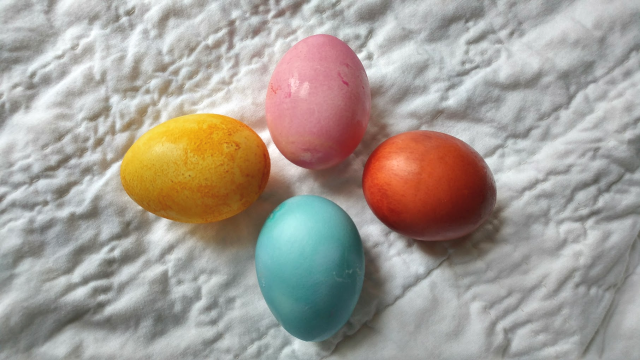
Comments
One response to “We Tested Pinterest’s Natural Easter Egg Dye Recipes”
Disagree with turfing the onions, just google colouring eggs with onions skins and check out the images. You can achieve some fantastic patterns on the eggs that will add a lot of interest to the final result.